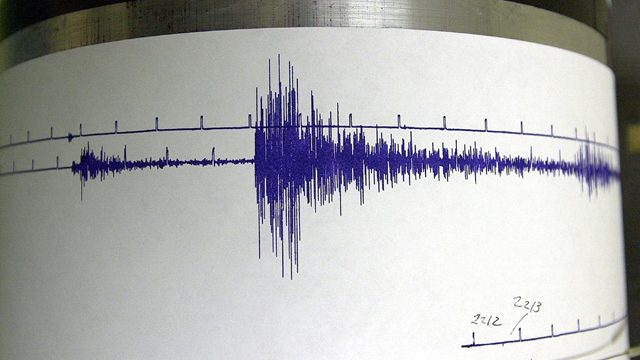Don’t expect much of a winter wallop this year, except for the pain of worsening drought, U.S. government forecasters said.
Two-thirds of the United States should get a warmer than normal winter, the National Oceanic and Atmospheric Administration predicted. Only Washington, northern Idaho, Montana, the Dakotas and northwestern Minnesota, will get a colder than normal winter, forecasters said.
The forecast for winter rain and snow splits the nation in three stripes. NOAA sees the entire south from southern California to North Carolina getting a dry winter.
Forecasters see wetter weather for the northernmost states: Oregon and Washington to Michigan and dipping down to Illinois, Indiana, Ohio and other parts of the Ohio Valley. The rest of the nation will likely be closer to normal, NOAA said.
For the already dry Southwest and areas across the South, this could be a “big punch,” said NOAA drought expert David Miskus.
About 45% of the nation is in drought, the highest level in more than seven years.
Mike Halpert, deputy director of NOAA’s Climate Prediction Center, said he doesn’t see much relief for central and southern California, where wildfires have been raging.
California
News from across California
What’s driving the mostly warmer and drier winter forecast is La Niña, the cooling of parts of the central Pacific that alter weather patterns worldwide, Halpert said.
For the East, big snowstorms or blizzards aren’t usually associated with La Niña. That’s more likely with its warming ocean counterpart, El Niño, he said. But he added that extreme events are not something meteorologists can see in seasonal forecasts.
Halpert also said he doesn't expect the dreaded polar vortex to be much of a factor this year, except maybe in the Northern Plains and Great Lakes.
The vortex is the gigantic circular upper-air pattern that pens the cold close to the North Pole. When it weakens, the cold wanders away from the pole and brings bone-chilling weather to northern and eastern parts of the U.S.
While Halpert doesn’t see that happening much this winter, an expert in the polar vortex does.
Judah Cohen, a winter weather specialist for the private firm Atmospheric Environmental Research, sees a harsher winter for the
Northeast than NOAA does. He bases much of his forecasting on what’s been happening in the Arctic and Siberian snow cover in October. His research shows that the more snow on the ground in Siberia in October, the harsher the winter in the eastern United States as the polar vortex weakens and wanders south.
Snow cover in Siberia was low in early October, but it is catching up fast and looks to be heavier than normal by the end of the month, he said.
The government predictions are about increased or decreased odds in what the entire three months of weather look like, not an individual day or storm, so don’t plan any event on a seasonal outlook, cautioned Greg Postel, a storm specialist at The Weather Channel.
But he said La Niña is the strongest indicator among several for what drives winter weather. La Niña does bring a milder than average winter to the southeast, but it also makes the central U.S. “susceptible to Arctic blasts,” he said.
La Niña also dominates the forecast by AccuWeather. That private company is forecasting mainly dry in the South, wet and snowy in the Pacific Northwest, bouts of snow and rain from Minneapolis through the Great Lakes region, big swings in the heartland and mild weather in the mid-Atlantic. The company predicts a few heavy snow events in the Midwest and Great Lakes, but less than average snow for the Northeast.
NBC 7's First Alert Forecast: Sheena Parveen Explains the Winter Outlook
NBC 7 meteorologist Sheena Parveen broke down NOAA’s Winter Outlook here.
“I find it fascinating because the Pacific Ocean’s water temperatures really control the jet streams across the entire country,” Parveen explained. “So, even the East Coast of the United States look at our Pacific Ocean to see what’s happening.”
Parveen talked about the effects of La Niña.
She said La Niña will influence two jet streams: The Polar Jet Stream and the Pacific Jet Stream.
“These are going to be very important when it comes to winter because they are going to drive temperature, precipitation, and the movement of any weather patterns that head into the West Coast,” Parveen said.
For San Diego, Parveen said based on the jet stream locations, this will mean that most of our storm systems this winter could be well to the north, in the Pacific Northwest, and Southern California would see that drier air.
“So, we could be seeing less in the way of rain and storm systems here,” Parveen explained. “Again, this is going to be variable with our jet streams, so if the Pacific Jet Stream moves a little farther south, and a storm system approaches, then we would be fair game for more rain. But, at this point, things could be a little warmer, a little drier than they were last winter.”
For more on NOAA’s winter outlook for the U.S., which favors these warmer, drier conditions across the southern tier of the U.S., click here.



